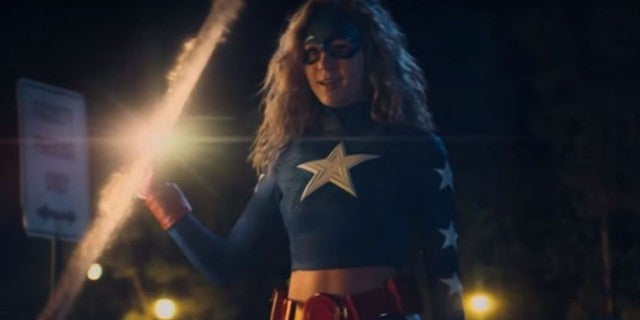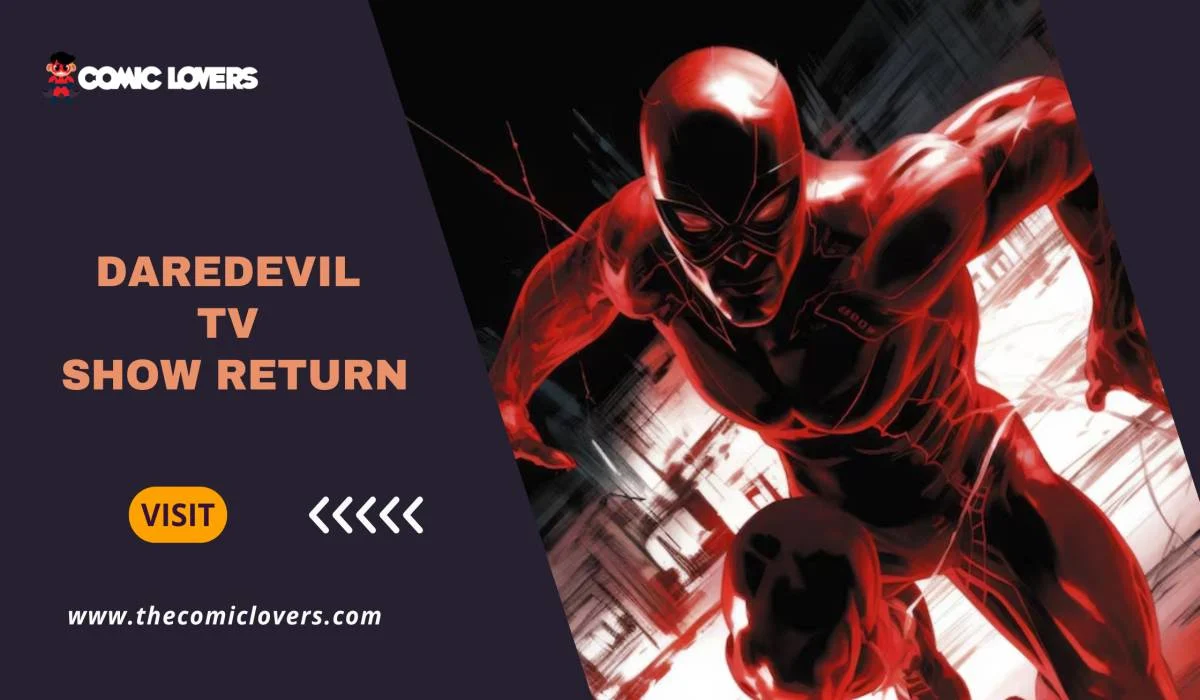When folks say they love winter, typically they refer to the primeval months of the season, with winter whence on Dec. 21 in the northern hemisphere. In those early days of holiday cheer, there is something familiar and comforting well-nigh the cold. But sooner the unexceptionable lights go away, and the wind howls louder. Eventually, all you’re left with is icy darkness.
Perhaps that’s why so many of the weightier horror movies are set during the winter season! Utilizing folks’ fear of waterless bleakness, and the tedium of stuff trapped inside rhadamanthine lethal, filmmakers who run the gamut from Stanley Kubrick to John Carpenter have imprinted our worst nightmares onto the snow. Unelevated is a list of their frozen works.
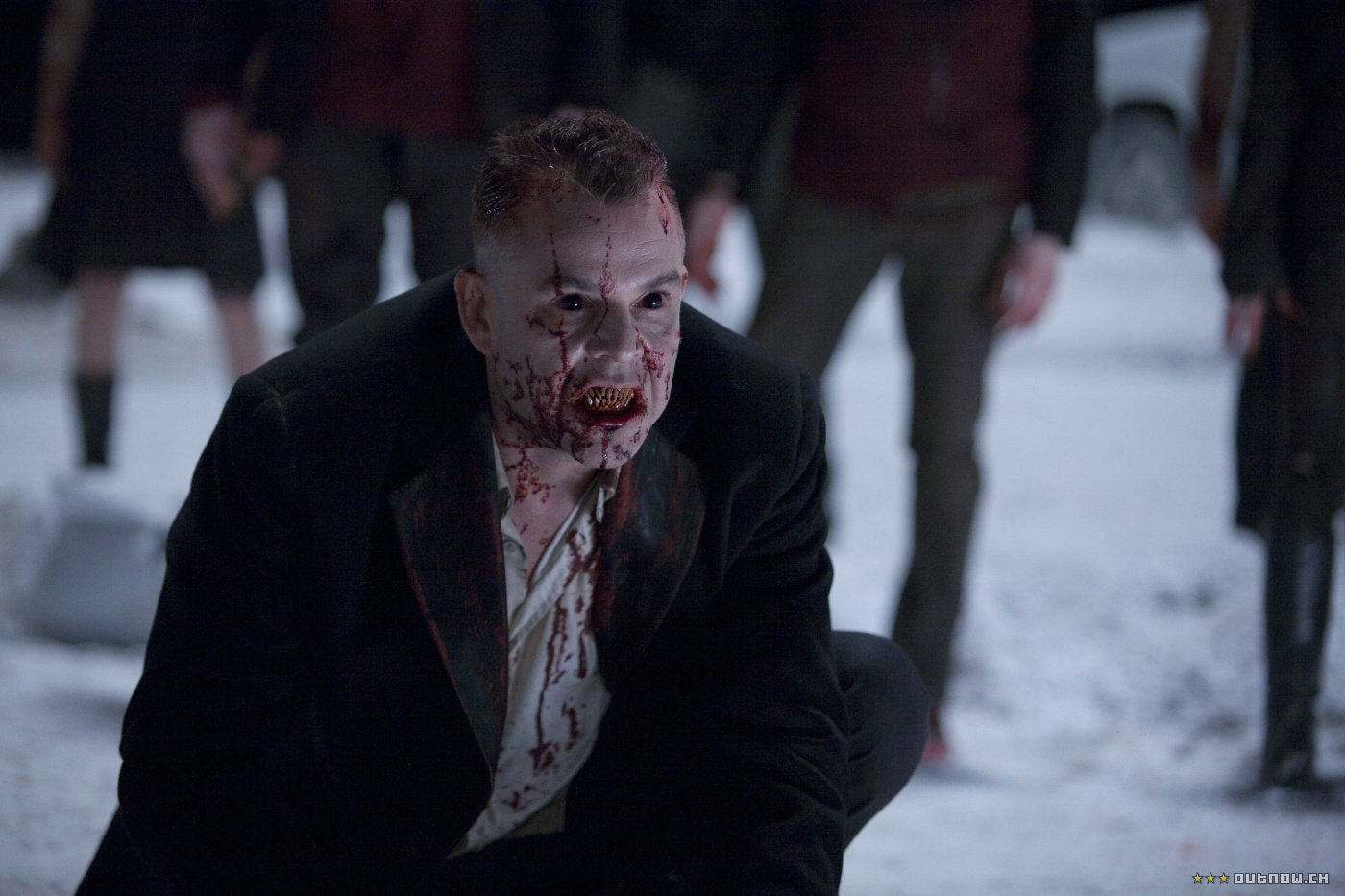
30 Days of Night (2007)
They have lived in shadows long enough. They are the last of their kind. But whilom the Tundra Circle there’s a party going on, and the main witchery is Vampires on Ice in this snowbound gorefest. For these are no mere tundra performers, the vampires of 30 Days of Night embrace the an old school brutality we haven’t seen since Nosferatu. All long clutches and sadistic, unforgiving stares, there is nothing seductive to these demons. They’re as unprepossessed as death itself, and for the 30 days when northern Alaska is plunged into darkness every year, they are going to feast.
It’s in this context we meet Sheriff Eben Oleson (Josh Hartnett). Despite stuff charged with the safety of his town, he quickly is reduced to trying to save at least his estranged wife Stella (Melissa George) from cretin who have turned his neighbors into cattle at a slaughterhouse. One of the niftier ideas for a vampire movie, 30 Days of Night is a gushing blast, and as much fun as seeing a creature of the undead get thrown into a snow plow.
Watch 30 Days of Night on Amazon
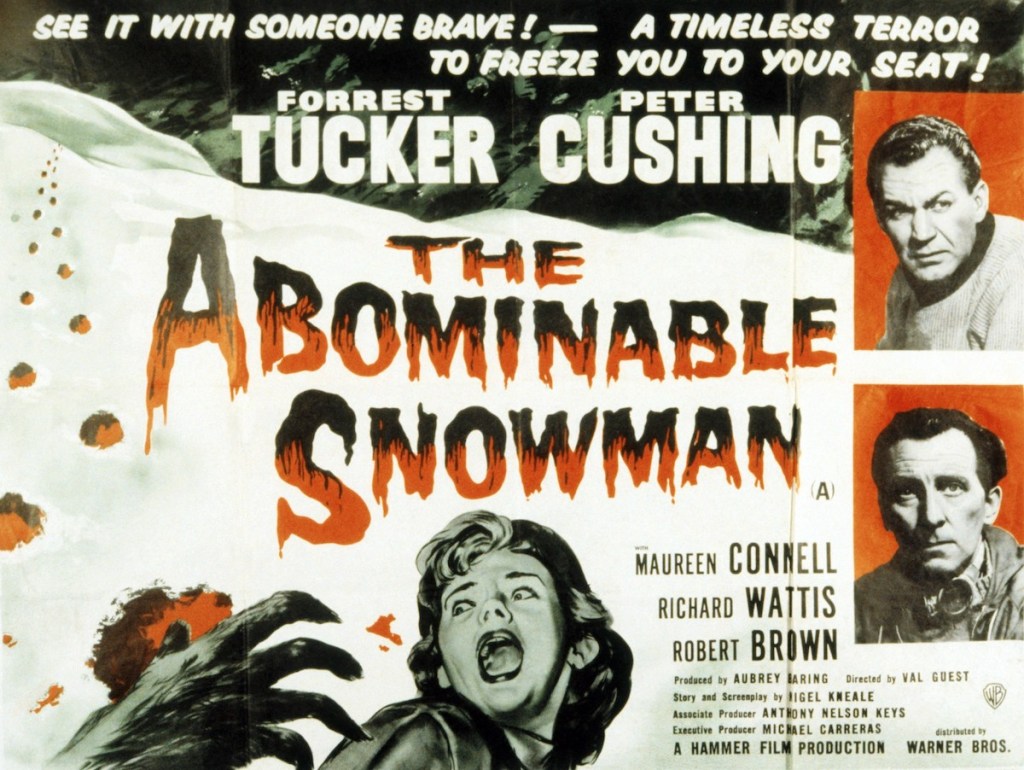
The Abominable Snowman (1957)
Known in the U.S. as The Abominable Snowman of the Himalayas, this Hammer production came from the pen of the often sunny Nigel Kneale, the writer overdue the Quatermass series and other seminal works of British sci-fi. Adapted by Kneale himself from his BBC teleplay The Creature, the mucosa stars Hammer staple Peter Cushing as a British scientist who joins an American trek (led by Forrest Tucker of F-Troop fame) in search of the legendary Yeti.
What they find in the high, remote and ice unprepossessed regions of the Himalayas is a surprise that’s on par with the rest of Kneale’s often would-be and psychosomatic sci-fi output: The Yeti are not monsters, but an intelligent species waiting patiently for humankind to destroy itself so that they can have the planet to themselves. Director Val Guest (the first two Quatermass films and The Day the Earth Caught Fire) captures the sharp characterizations and themes of Kneale’s script, but the movie suffers from a slow pace and a low upkeep that keeps its wintry locations stuck on a studio backlot. Still, it’s worth watching for Kneale’s story, Cushing, Tucker, and some atmospheric moments.
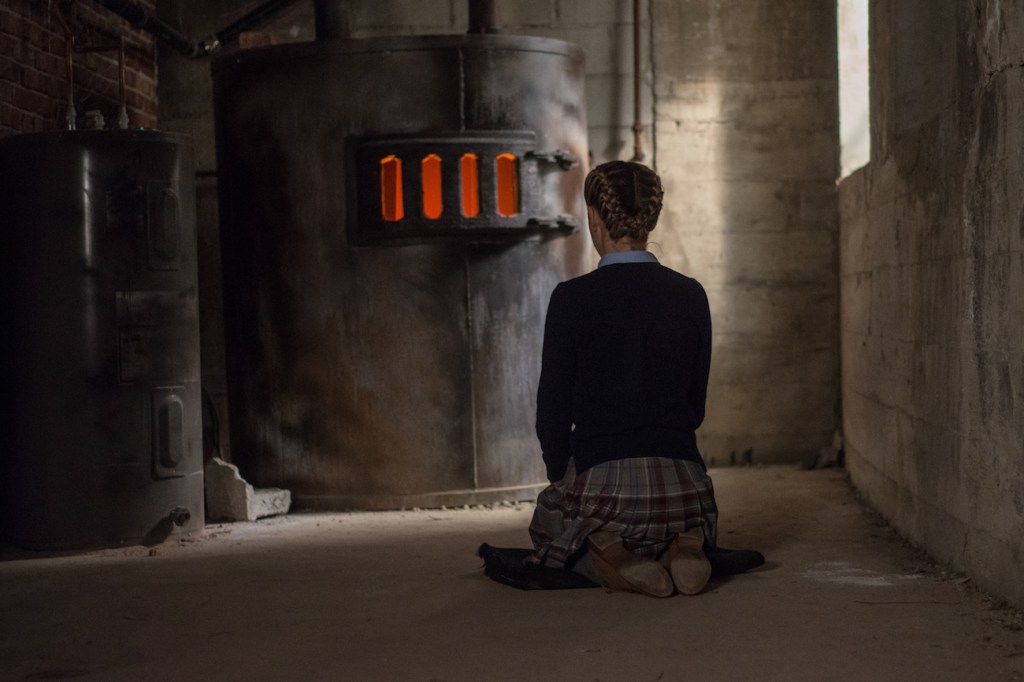
The Blackcoat’s Daughter
While certainly an uninventive taste, Oz Perkins and A24’s The Blackcoat’s Daughter still feels underrated. A deliberate and brutally unforgiving mystery that waits nearly its whole running time to unfurl its depravity, the mucosa is relentlessly pessimistic with one of the biggest gut-punch endings we’ve seen in the last decade.
The mucosa follows two separate threads that will inevitably intersect. The first is that of Kat (Kiernan Shipka), a young lonely girl who has nowhere to go at her boarding school over holiday break. She thinks she’s found a connection with an older student named Rose (Lucy Boynton), who moreover has moreover elected to stay behind. But Rose has other things on her mind, including stories of occult witchcraft in the vault lanugo below. Meanwhile a separate former student named Joan (Emma Roberts) is on her way to the same school… for reasons unknown.
The less you know well-nigh this the largest its devastation plays.
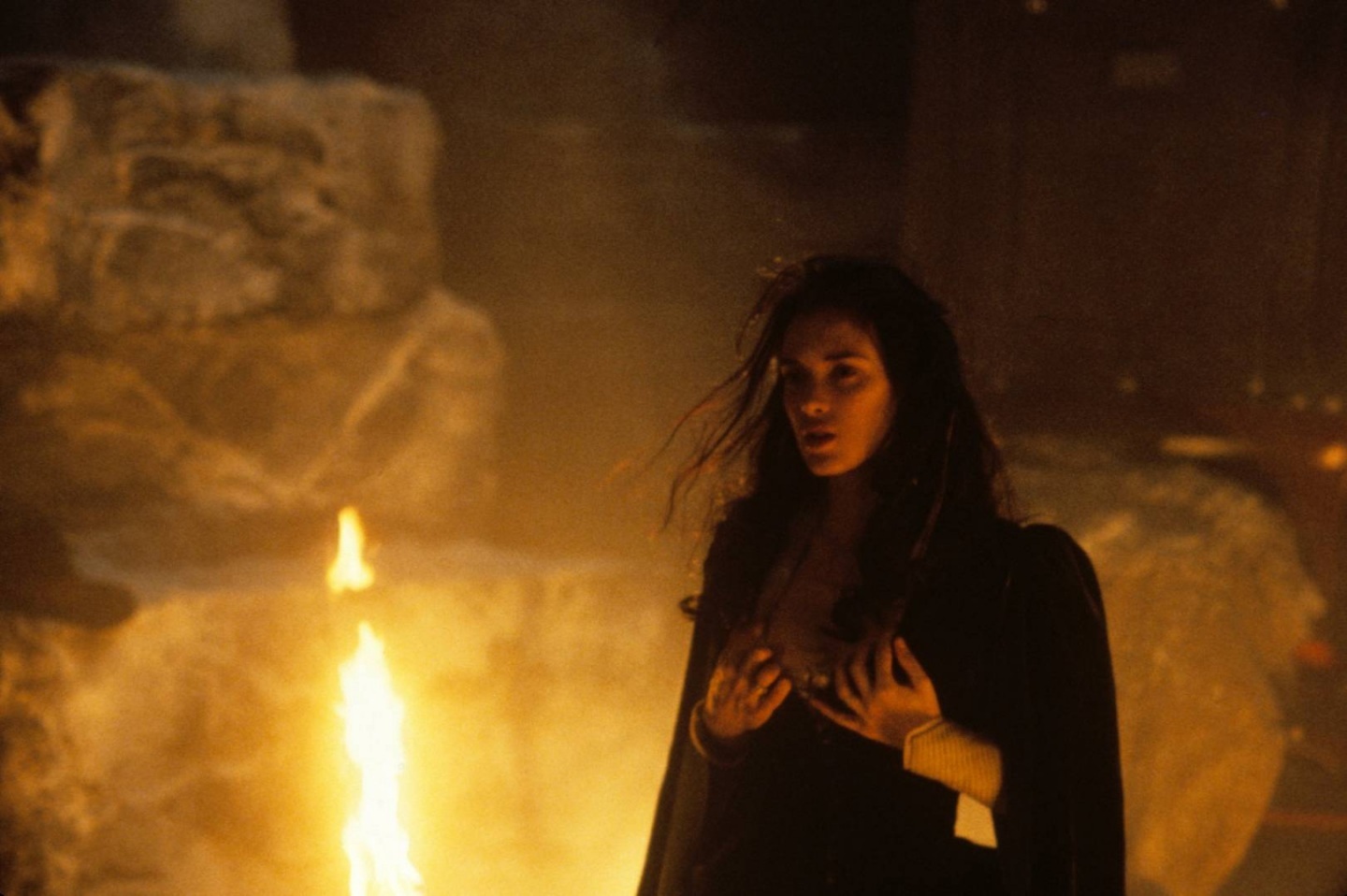
Bram Stoker’s Dracula (1992)
As a mucosa that is unquestionably set virtually scrutinizingly an unshortened year—1897, to be exact—Francis Ford Coppola’s luscious and decadent chiller memorably concludes in the sufferer of winter when the snow is piling high. The mucosa might be deceptively titled, but Bram Stoker’s Dracula is nevertheless a tour de gravity in old school mucosa production, well-constructed with Oscar winning costumes and makeup, and special effects resurrected straight out of the Vaudeville era. This includes its wintry wickedness too.
With only a single shot unquestionably filmed in natural daylight, there is a heightened hysteria to the way Coppola conjures a stylized vision, including his third act snowstorm in the wilderness of Transylvania. As traffic-stopping as any other of the movie’s feverish dreamscapes, the white powder that falls on Winona Ryder and Anthony Hopkins’ cloaked heads never looks exactly real, yet is untellable not to find seductive with its painterly quality and rich cinematography. The pulp claustrophobia only grows as Ryder’s vampire-halfling momentarily ensnares Hopkins’ Van Helsing, and Van Helsing then in turn uses his very sword while visiting Dracula’s Brides in their crypt. The effect is operatic and ponderous, and finally overwhelming as audiences are driven into the mania that pushes the vampire hunters and their prey during a climactic horse ventilator over icy mountains. It all leaves every weft mad… and veiled under an Eastern European unprepossessed that’s as enthralling as any vampire bite.
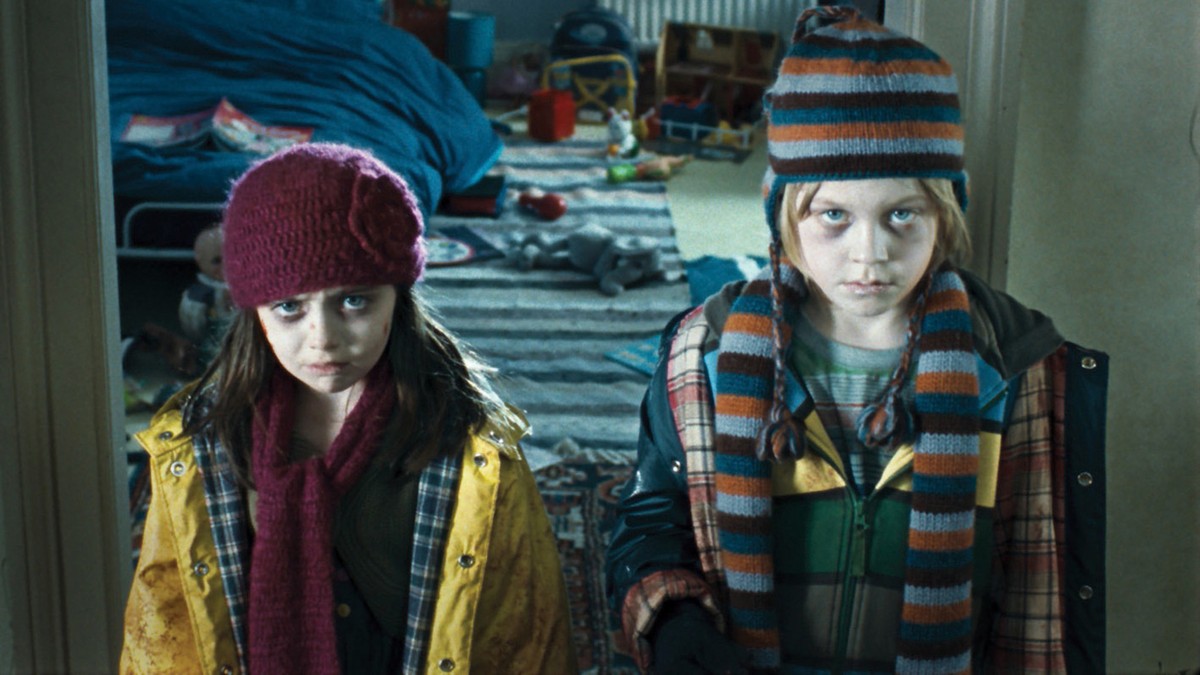
The Children (2008)
The idea of our very children turning versus us is whimsically a new one—it’s manifested in everything from Village of the Damned to Who Can Kill a Child? to The Good Son—but it was brought home in expressly nasty malleate with this 2008 horror thriller directed by Tom Shankland (who has recently directed episodes of The Leftovers and The Punisher). Two sisters and their families get together at the statesman sister’s secluded country home for Christmas, only for the children to uncork turning versus their parents in homicidal fashion, forcing the adults to fight for their lives, plane as they grapple with the idea of killing their own offspring.
The film’s holiday backdrop, normally a respite for families, is ironically turned into a festival of death as the tots find macabre ways to off their parents. It’s never really explained what turns the kids into literal little monsters (there are suggestions of some kind of infection early on), but what gives The Children an uneaten twist of the pocketknife is the exploration of the parental urge to defend one’s own kids, plane in the squatter of their worst possible behavior. Tautly written and directed and genuinely disturbing, The Children will leave you chilled in ways that have nothing to do with its winter setting.
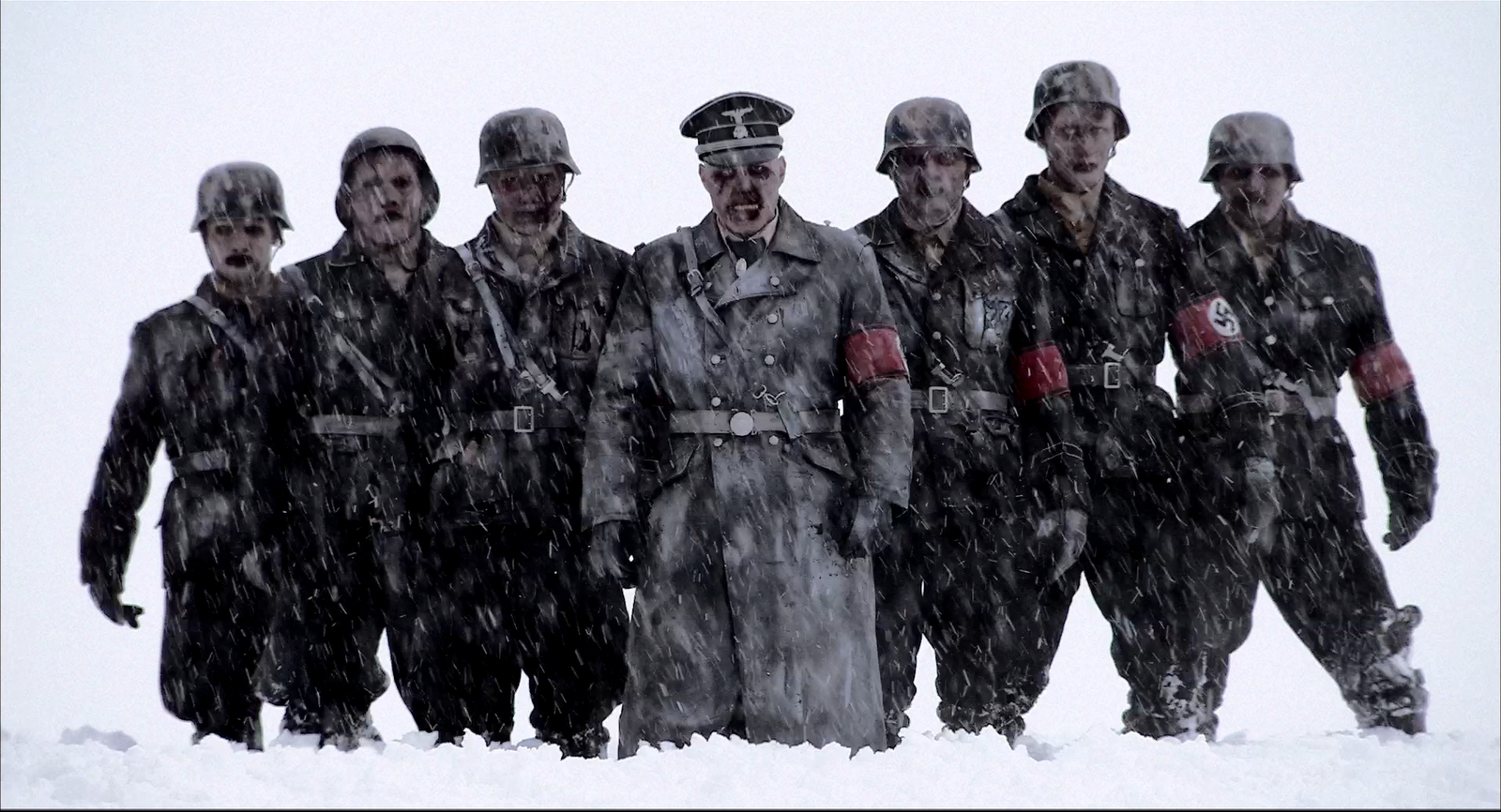
Dead Snow (2009)
Snow and Nazi zombies. Do you really need to know more? Tommy Wirkola’s mucosa is heavy on style and completely woolgathering of anything resembling substance, but in the long nights of deep chill, who is looking for anything too meaty in their entertainment? Thus enters Dead Snow, a gonzo horror movie in which Third Reich, goose-stepping ghouls parade virtually a Norwegian mountain motel that is ostensibly for skiing, yet primarily exists to provide the zombies with a fresh stream of meat to devour. You see them eat, machine gun, and slice humans who in turn get to use all manner of World War II tech versus the hordes of corpses who seem inexplicably less scary in death than they did in life. For those who just like mayhem, well-constructed with some Edvard Grieg music to matriculation things up upon occasion, this is nonflexible to beat.
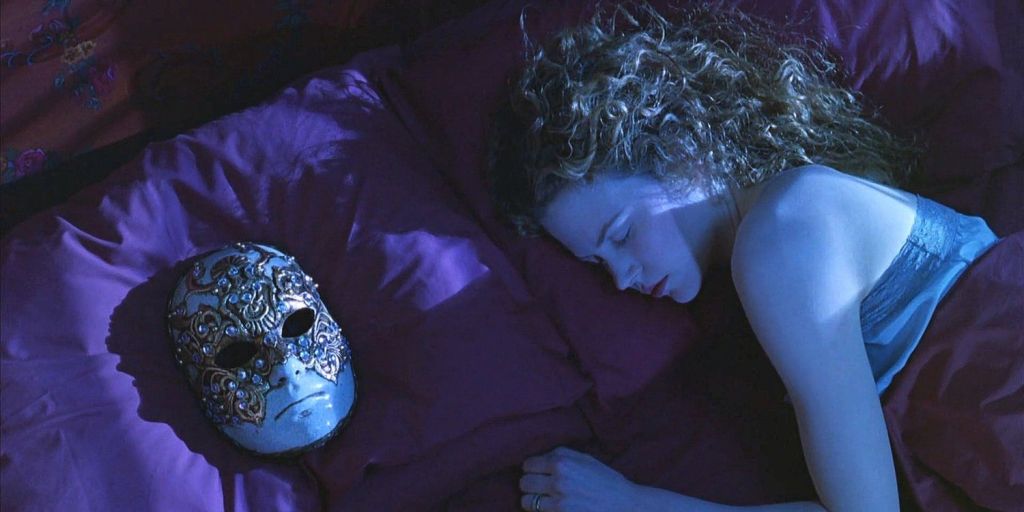
Eyes Wide Shut (1999)
Stanley Kubrick‘s final mucosa is moreover the director’s most polarizing, yet hypnotic picture. Eyes Wide Shut is a stunning plummet lanugo the rabbit slum of fidelity and the limits of romance and trust, as Tom Cruise’s Bill Harford experiences the craziest night of his life. This mucosa may be notorious due to its raucous orgy scenes, but those same set-pieces are moreover master classes in tension and suspense. Kubrick doesn’t shy yonder from Bill’s pulp journey. The performances moreover hit a little harder when then-married Cruise and Nicole Kidman are the ones who bring this inside (and frustrated) couple-in-crisis to life.
Eyes Wide Shut might not initially seem like the most winter-centric film, but Kubrick uses the season as a thematic sounding board. Elements like Christmas trees are meticulously placed and Kubrick perverts the symbol for his own pleasures, all while the universal suntan of winter weather gnaws at its hero with as much indifference as so many masked naked bodies. Also, that Chris Isaak song cannot be beat.
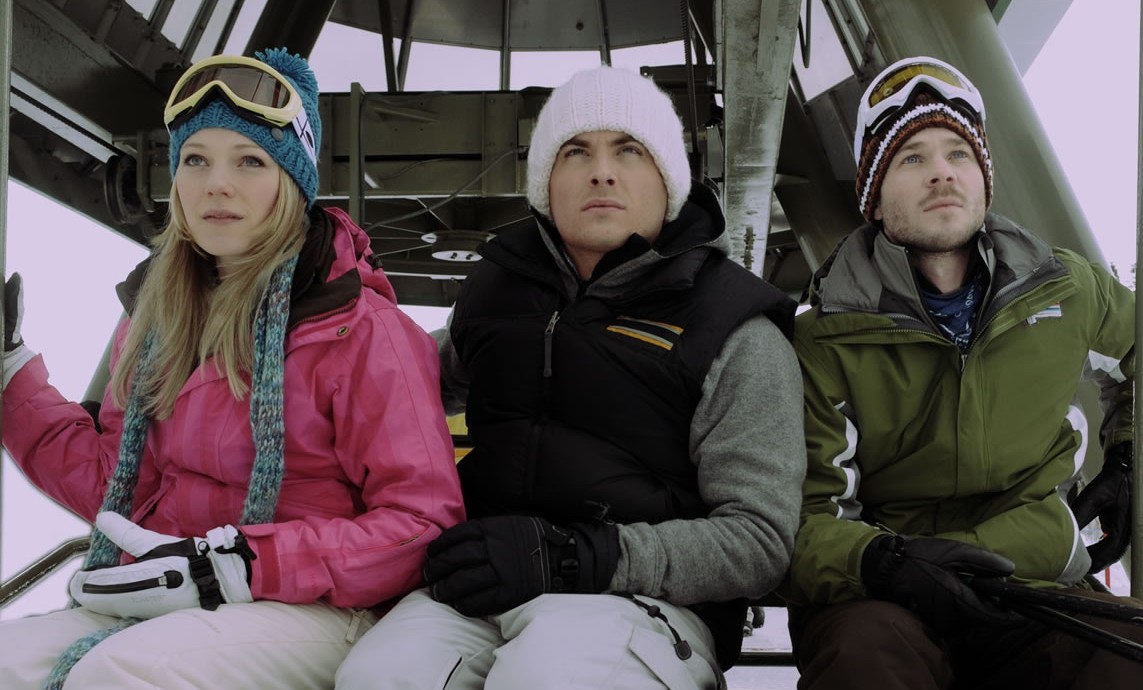
Frozen (2010)
Adam Green has gone on to make a career out of franchise slashers thanks to his cult-popular Hatchet series, but he’s never been largest than in this unobtrusive horror film, Frozen (note: not the one with Anna and Elsa). Here’s the setup: Three people get stuck on a ski lift at a resort that’s sealed for the weekend. That’s it. The mucosa does a trappy job as it explores the futility of this situation. Every conceivable escape plan is considered, and it’s devastating to see that these aren’t stupid characters, they’re just stuck in an untellable scenario.
Frozen excels at small weft moments and relationship drama, but what this mucosa does weightier is make you feel cold. The mucosa is a unvarying reminder of how much it sucks to be stuck out in subzero temperatures. There’s a unrepealable scene that involves someone falling unconsciousness with their squatter on unprepossessed metal and if it doesn’t make you cringe, then you’re simply not human. Frozen makes the most out of a minimalist situation and completely delivers.
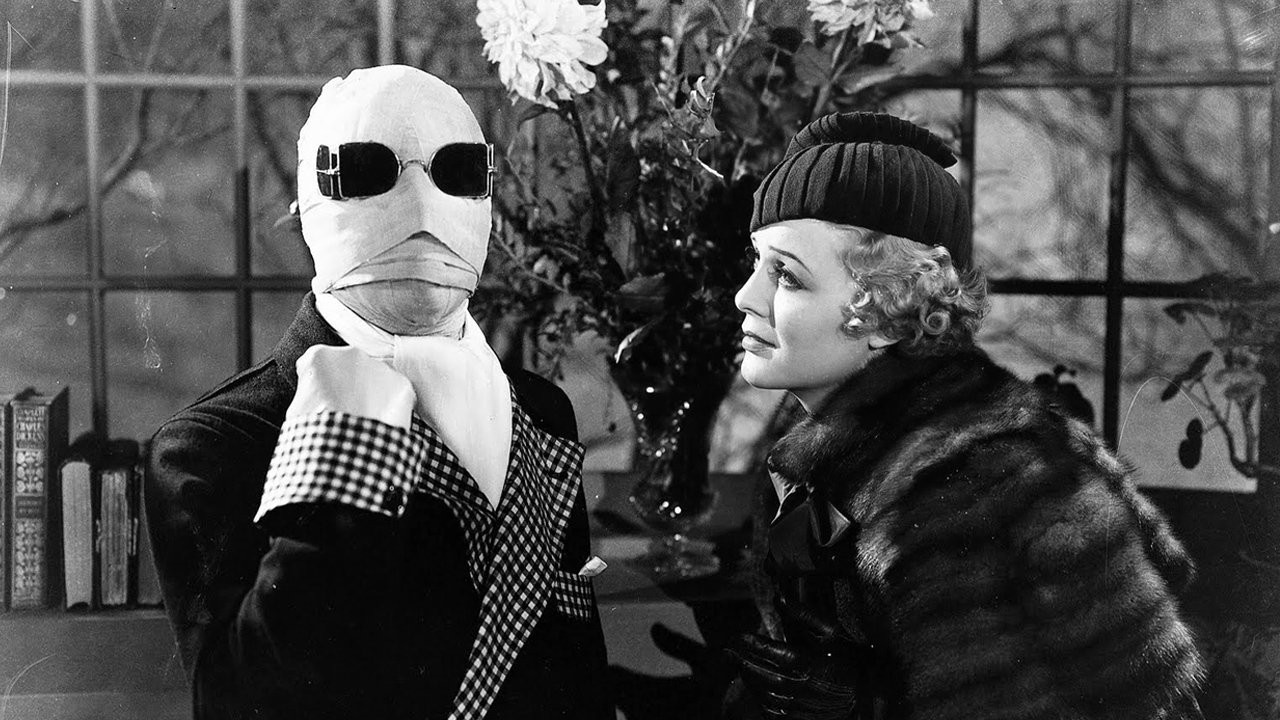
The Invisible Man (1933)
Every year in Brooklyn, the Polar Withstand Club strips lanugo to swimming trunks to take a dip in the frigid waters off Coney Island. Across the pond, in the Lion’s Throne Inn in the English village of Iping, Dr. Jack Griffin does them one better. He doesn’t just unwrap his scarf. He fully exposes himself to elements unprepossessed unbearable to freeze the icicles off an Eskimo. Released in 1933, The Invisible Man was released surpassing the Code, so when Claude Rains bares it all, he is truly out of sight.
Griffin went to the country to deal with seasonal peepers in solitude. When he finally comes out of his shell, he gives the country bumpkins a bit of a shock, but his oh so subtle recreate starts to win them over. He plane frolics with Una O’Connor, and leaves overdue a nice bedtime story.
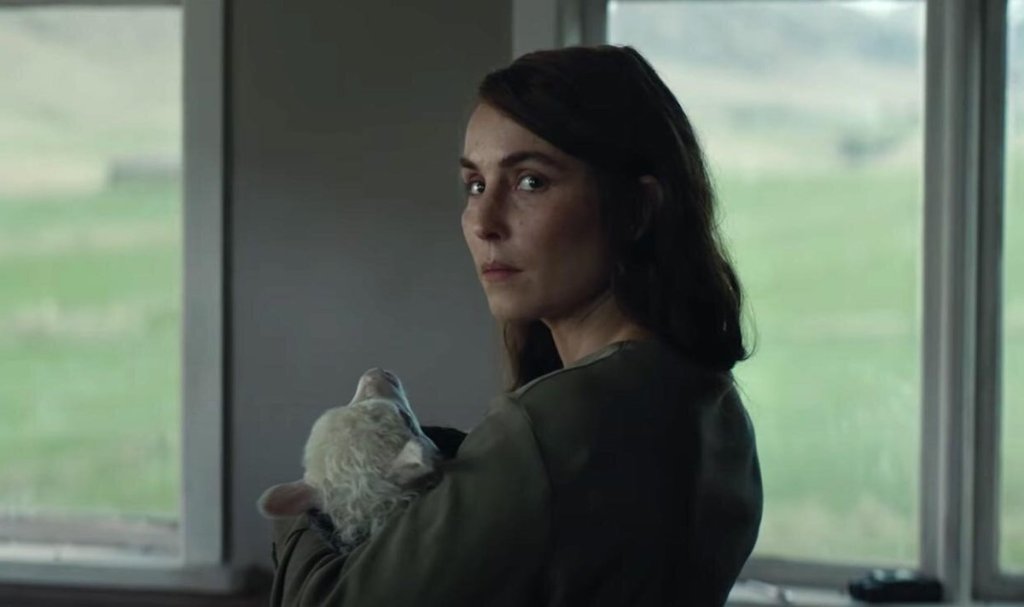
Lamb
The eeriest thing well-nigh Lamb is how seriously, and plane pleasantly, it treats its premise: Without Christmas Eve, two lonely and grieving sheep farmers (Noomi Rapace and Hilmir Snær Guðnason) make a horrible discovery. Something has impregnated one of their livestock with a creature that is half-human and half-lamb. And in her own personal despair, Rapace’s Maria makes the unnatural nomination to raise this creature as her own.
Director and co-writer Valdimar Jóhannsson treats this as an Icelandic folktale, which is perhaps why instead of veering toward the conventions of horror, Maria’s household is the image of domestic bliss. But the longer the movie plays, and the older their lamb child gets, the tighter the knot in your stomach will turn.
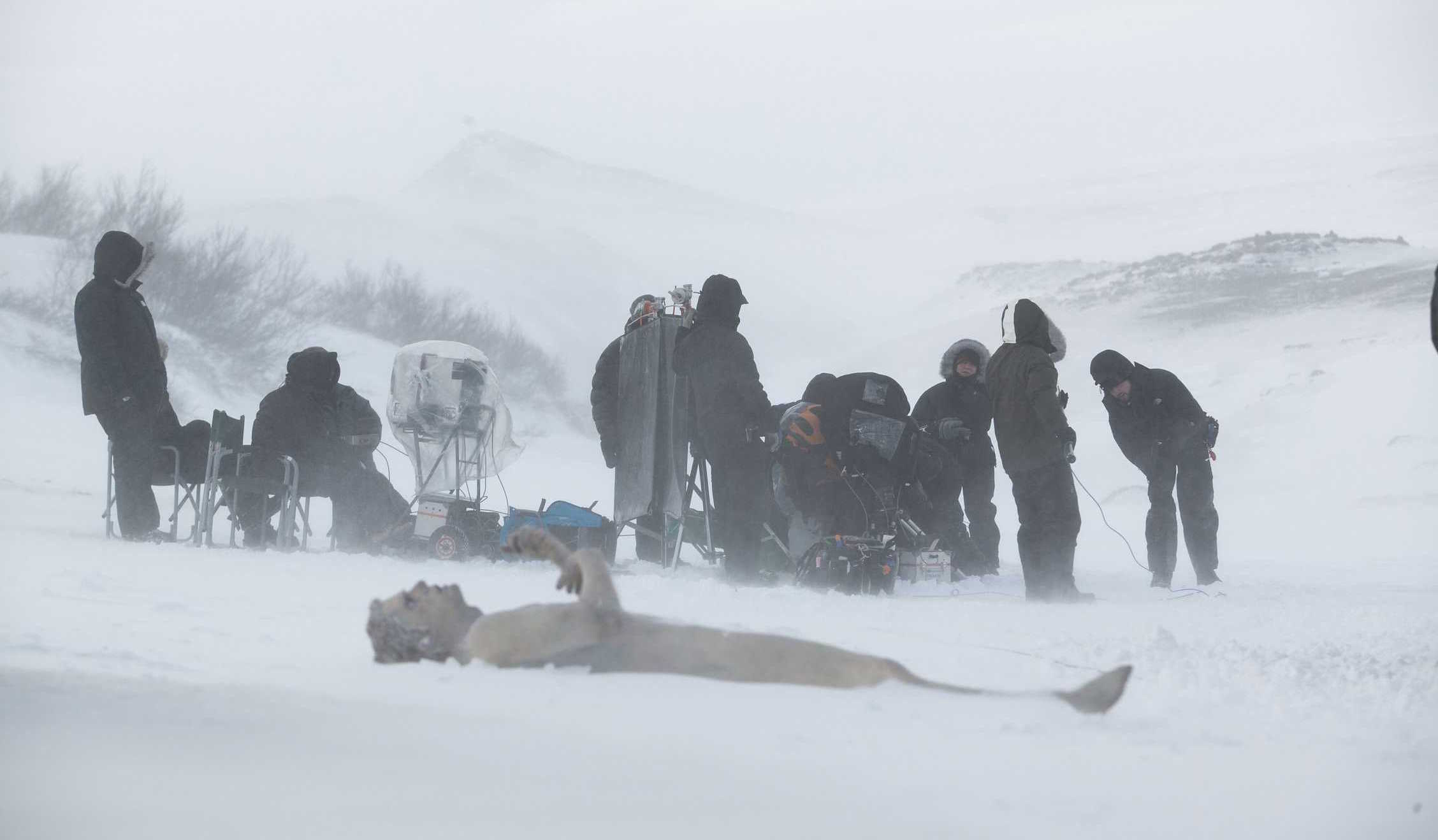
The Last Winter (2006)
As the last and most expansive of four highly personal horror films written and directed by maverick mucosa entrepreneur Larry Fessenden (whose Glass Eye Pix has been a stronghold of off-the-grid indie filmmaking for increasingly than three decades), The Last Winter features Fessenden’s most overtly topical story, as well as his first Hollywood-name cast. Ron Perlman, James LeGros, and Connie Britton work on an oil drilling wiring in the Tundra National Wildlife Refuge, where the gruff Perlman is interested only in getting the woebegone gold out of the ground while LeGros and Britton are tasked with keeping the operation in line environmentally. A series of strange occurrences, however, uncork to tweedle yonder at the minds and lives of the hairdo and soon lead to a realization that nature itself may be seeking vengeance on humanity.
Like The Thing (a well-spoken influence, although the crafty Fessenden zigzags through others as well), The Last Winter benefits enormously from its massive and utterly unappetizing Icelandic locations and the sense of isolation and emptiness they provide. The unprepossessed is moreover an ever-present threat, making us enlightened that nature can be a formidable danger plane without manifesting itself as ancient, wrestling spirits.
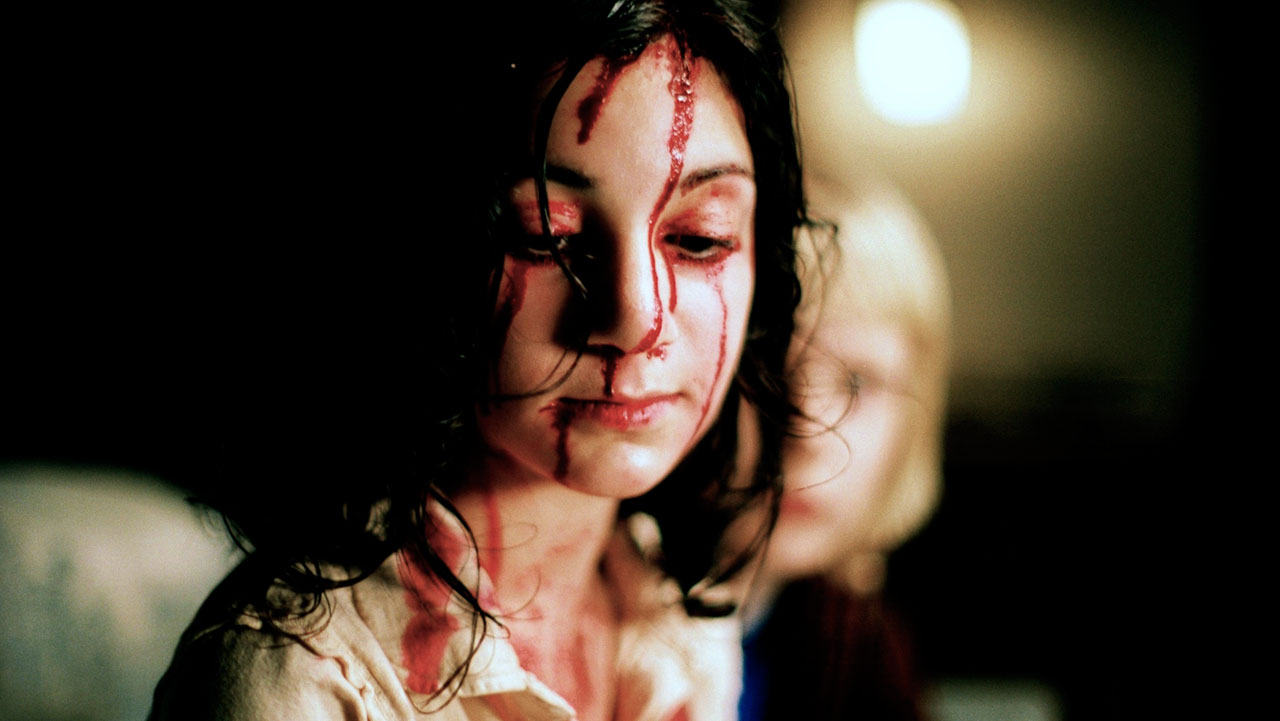
Let the Right One In (2008) / Let Me In (2010)
These back-to-back adaptations of John Ajvide Lindqvist’s novel are fairly equally matched in heartbreaking tenderness and swirling snow. The original Swedish mucosa is considered the all-time classic, and rightfully so. It made Let Me In possible, and reminisces well-nigh white blanketed, 1980s childhoods with longing and dread—and in a vision that far increasingly intensely fears the threat of toxically violent bullies than it does its vampire anti-heroine Eli (Lina Leandersson). Yet its somewhat sweet, and somewhat sinister, romance between a lonely, worrisome boy and a deceptively helpless vampire girl is given an uneaten dimension in Matt Reeves’ underrated American remake a few years later that starred Chloe Grace Moretz as the vampire child, Abby.
This is considering Reeves widow a Spielbergian quality to the visions of wayfaring ice, which made the story’s ultimately icy cadre that much increasingly imposing. Moreover drawing on Alfred Hitchcock for the murders conducted by Abby’s watchman (and the boy Owen’s Ghost of Christmas Future), the film’s scenes of human-inflicted violence have a increasingly visceral terror—one that makes for a splashy red glow in the white snow.
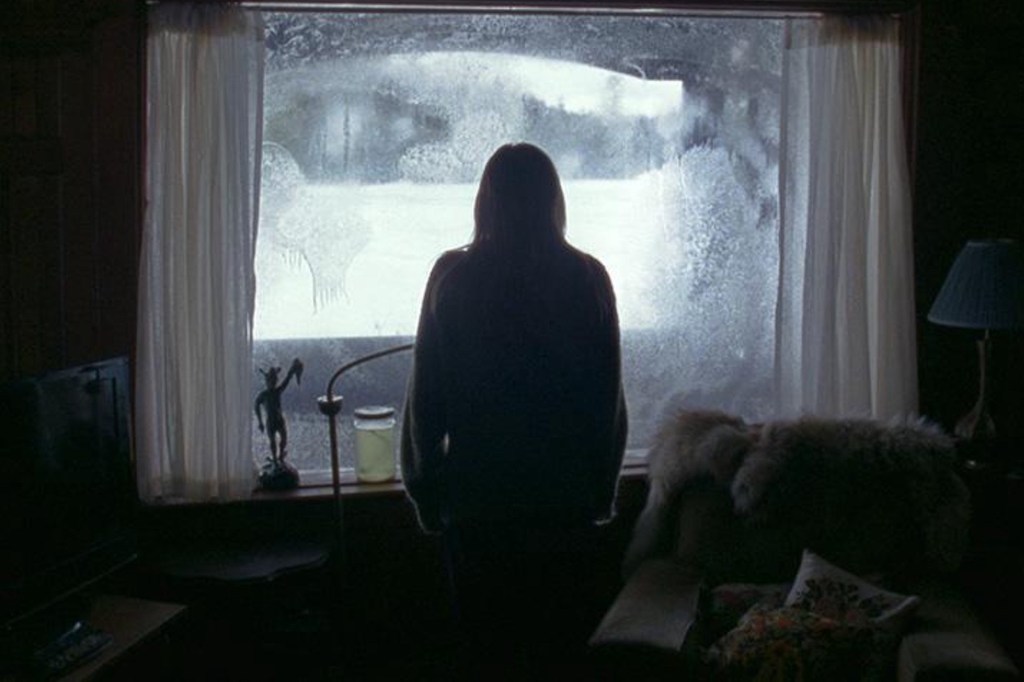
The Lodge
No one likes stuff snowbound. Not only can you not leave the premises, you can’t plane leave the house without threat of death. But what if there’s someone—or something—else in the house with you? Stanley Kubrick and Stephen King mined the idea to iconic effect in The Shining, but Severin Fiala and Veronica Franz (of Goodnight Mommy fame) make it fresh then with The Lodge.
The movie features a devastating performance by Riley Keough as Grace, the young, would-be stepmother to children Aiden (Jaeden Martell) and Mia (Lia McHugh). Without their father is unable to reach their holiday retreat considering of a blizzard, Grace is vacated with the kids who vituperation her for their parents’ divorce. But if their judging vision weren’t enough, the (literal?) ghosts of Grace’s complicated past uncork walking the halls with them.
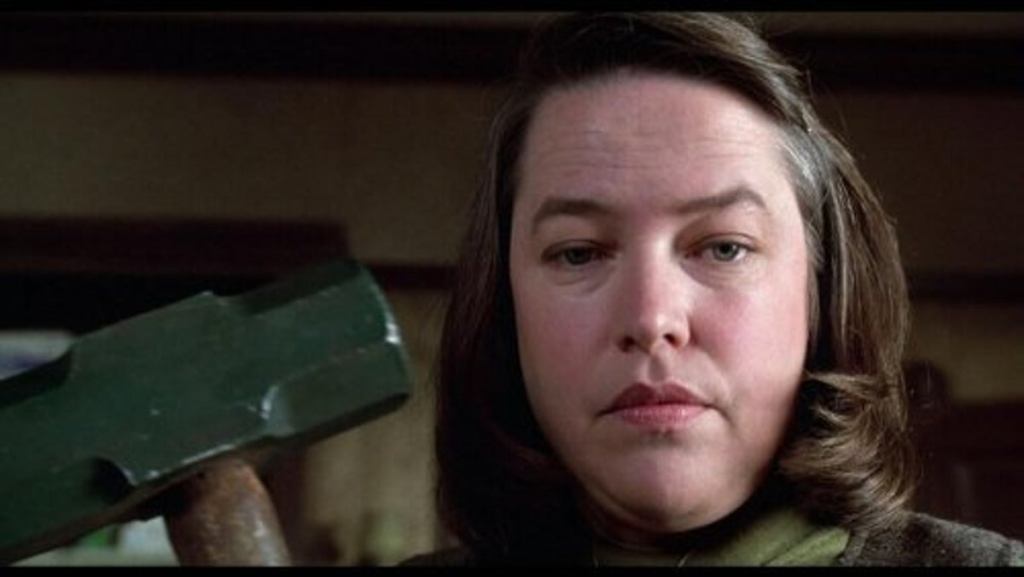
Misery (1990)
Stephen King was so superiority of the lines that he unwittingly invented a metaphor for the parasocial relationships on social media between artists and their fans nearly two decades surpassing Facebook was a thing. And in Misery, that relationship gets physical without the vehicle of Paul Sheldon (James Caan) goes spinning off the road in a snowstorm. When he wakes up, he discovers is life was saved by an voracious reader and super-fan named Annie Wilkes (Kathy Bates). And Annie has ideas well-nigh how Paul’s next typesetting in his popular series should end… and her scuttlebutt section comes with a sledge hammer. Maybe she should’ve left him in the snow?
An obvious metaphor for the relationship of all writers with their readers, or any versifier with an observer, Misery unsurprisingly leans toward the author’s perspective. And it’s captured with a darkly humorous tone by director Rob Reiner who likely could not plane imagine the day when major multinational corporations would rewrite the unshortened plot of a nine-figure movie considering of hashtags on Twitter.
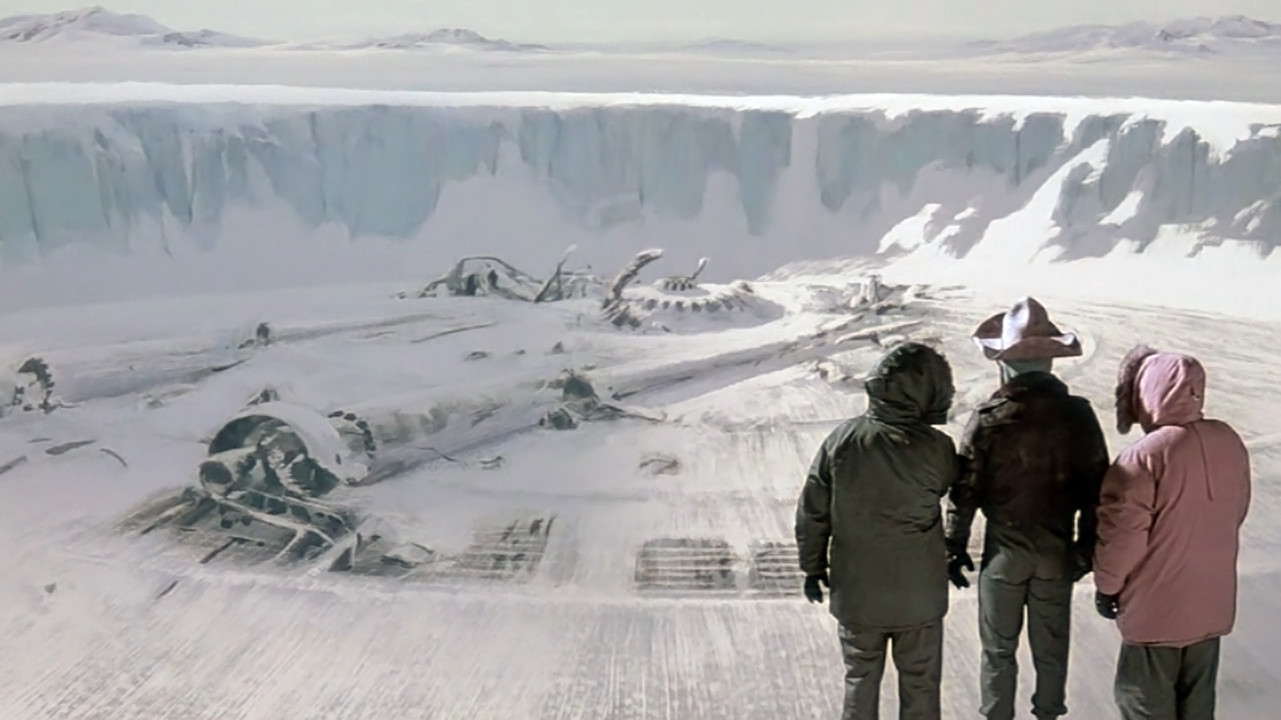
The Thing (1982)
It’s lonely stuff a scientific research team at the very marrow of the planet, where you can freeze to death while taking the trash out. But that’s what life is like for the 12 men in The Thing stationed at an American outpost in Antarctica—men who suddenly find their laconic existence disrupted by the inrush of an wayfarer organism with shape-changing skills vastitude any understanding. Thus our pack of a dozen dank eccentrics and misanthropes are forced to defend the very world they’ve cut themselves off from.
So much has been written well-nigh Carpenter’s sci-fi/horror masterpiece that there is frankly little new ground to cover, but the setting (which comes straight from the original John W. Campbell Jr. novella, Who Goes There?) adds to the tension, paranoia, and dread that the director establishes early on. The uncounted expanse of white emptiness, the cold, nonflexible ground crunching underneath the feet of the men, the flames glowing versus the snow as an wayfarer imposter is set on fire… the mucosa wouldn’t work nearly as well if it was set on, say, a tropical island. In John Carpenter‘s The Thing, the Antarctic wasteland feels as vast and terrifying, and unknown as space itself.
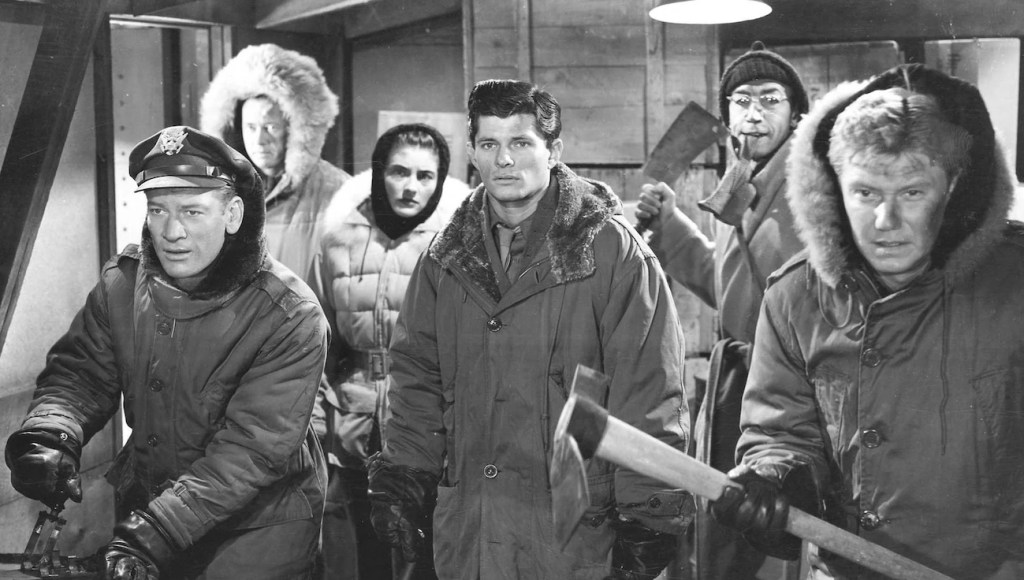
The Thing from Another World (1951)
If you ask which version of The Thing John Carpenter would prefer to wrap himself up with while snowed in, he would probably say The Thing From Another World. The director of the 1983 remake initially unslaked at the project considering he didn’t believe it could be outdone. So he overdid it, graphically focusing on the increasingly violent deaths of tundra explorers without unbearable sense to stick together in a group. They wander off and get picked off one by one, and limb by limb, like they’re stationed in a slasher movie. Directed by Christian Nyby, who’d helmed The Big Sleep, the 1951 original keeps all the killings off-screen, permitting our imaginations to fill in the gory details until James Arness gets zapped at the end.
The Air Force-led hairdo of Polar Trek Six, stationed at the North Pole, know how to alimony things chill. They build tension without bloodshed, plane as they die unexpectedly on routine maneuvers. The throne scientist, Dr. Arthur Carrington (Robert Cornthwaite), a Nobel laureate no less, wants to communicate with the murderously hostile wayfarer instead of killing it. He thinks this heretofore-unknown vegetable-based life form might plane be superior to humans, and gets swatted yonder like a fly. It is far increasingly chilling, expressly as the paranoia creeps in, and it appears anyone might be the danger. “Watch the skies, everywhere,” radio journalist Ned Scott (Douglas Spencer) broadcasts to the world at the film’s conclusion. This mucosa is one of the weightier reasons to “keep watching the skies.” Expressly when it’s snowing, you never know what might fall out of it and get veiled in a drift.
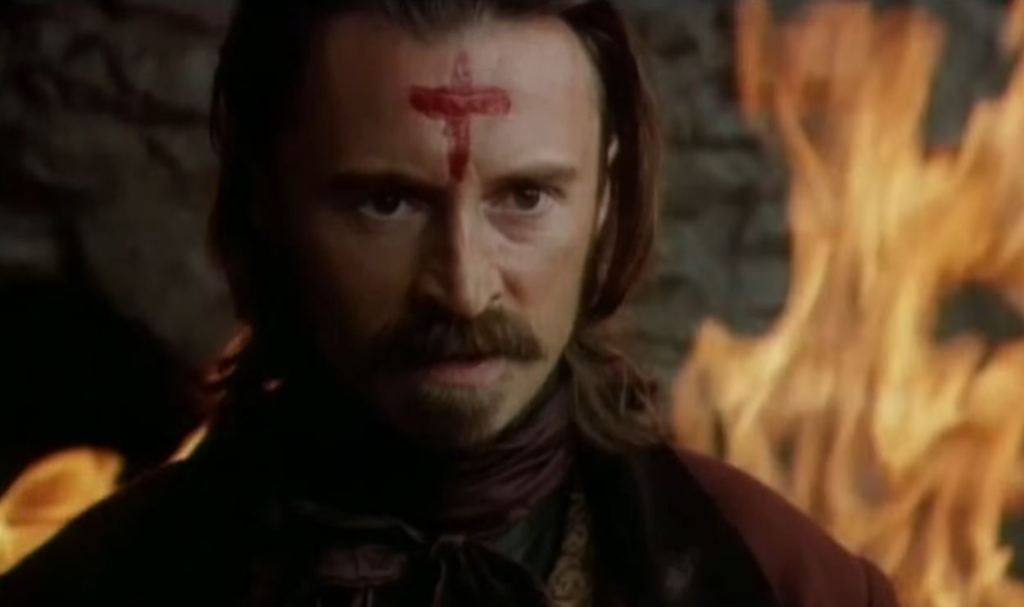
Ravenous (1999)
The consumption of human flesh. There is something instinctual, or plane spiritual, that innately tells all humans to misprize this morbidity. Not that this ways everyone listens to those largest angels. Indeed, Ravenous is an veritably depraved welter as a horror-comedy well-nigh what happens when cannibalism becomes regimented. Indeed, the mucosa combines the grisly nightmare of the Donner Party—the trek to California that was forced to resort to cannibalism without getting trapped in the deep snows of the Sierra Nevada mountains—with exaggerated rumors of cannibalism among unrepealable Native American tribes.
As the anti-Dances with Wolves, Guy Pearce’s Capt. John Boyd attempts to escape ugly memories of the Civil War out in a remote U.S. Cavalry outpost in the mid-19th century American West. It is there that a fellow officer named Col. Ives (Robert Carlyle) appears with a tale of wintertime murder and cannibalism. Yet when Pearce and other soldiers go to investigate what they think is a mere treason scene, what they discover is a much increasingly heinous. For here is not a story of survival, but of spiritual violation, and quite literal soul food. Hence surpassing the spring blooms, Pearce is going to have to squatter the need for hardy meals if he is to survive this winter. He might plane floweret into something stronger as a result.
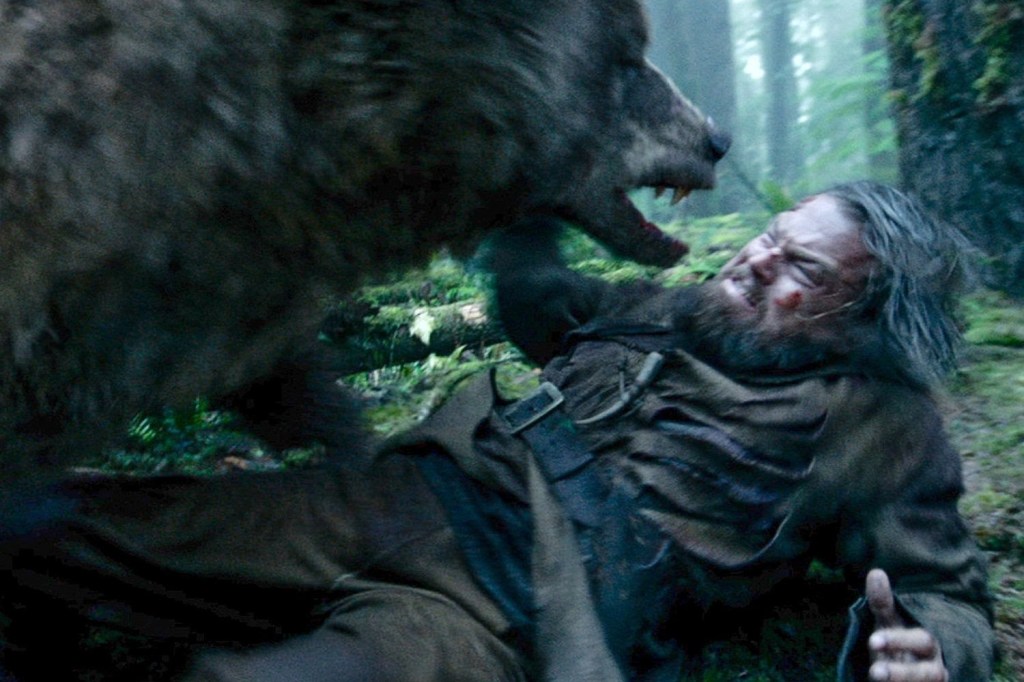
The Revenant (2015)
There are plenty who would say that Alejandro G. Iñárritu’s The Revenant does not count as a horror movie. And those people are wrong. For here is the definitive mucosa well-nigh the kind of inclement unprepossessed that digs so deep into your wreck that you’ll forget what warmth overly felt like. It is an unrelenting, grueling tale of macabre survival, one in which variegated levels of nastiness are endured just by watching Leonardo DiCaprio waste yonder into frailty for this Oscar winning role which required swimming in very frozen rivers, climbing naked into the carcass of a sufferer horse, and finding joy in the simplest whispers of a flame. It’s a mucosa so obsessed with the horrors of wind nippy that it moved its production to South America to maintain an pure wintertime production during what is considered summer months in the northern hemisphere. The Revenant is defiantly sadistic in its lack of heat.
Well except for the sweaty vapor of a grizzly withstand mounted atop DiCaprio. It is a scene scarier than anything seeming in all the other films in this list, and it will haunt your dreams as undoubtedly as the snow crusting in DiCaprio’s beard.
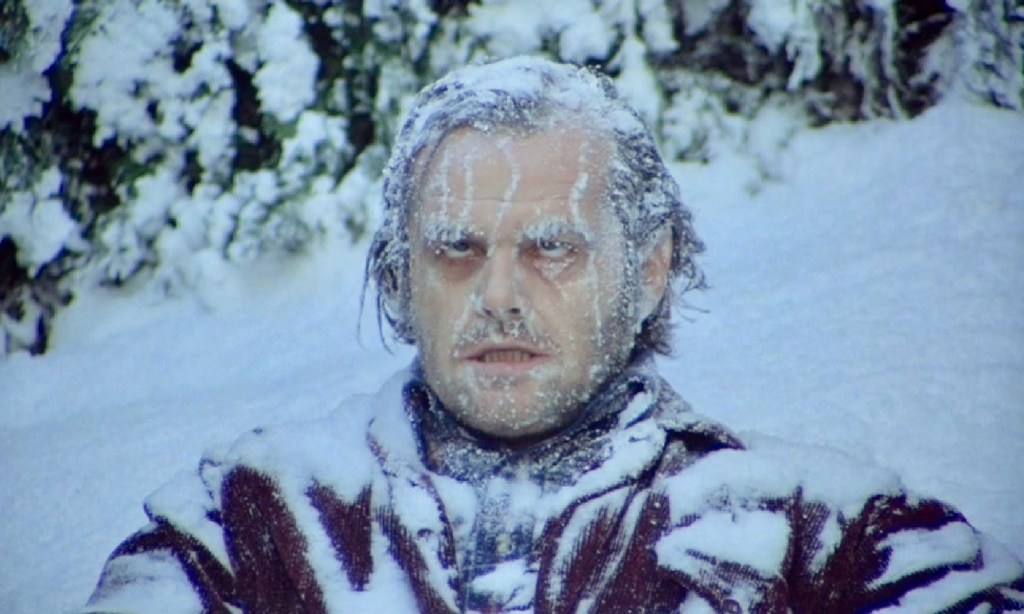
The Shining (1980)
The weather outside is frightful. But the Overlook Hotel is so delightful. And since there is nowhere to go (or escape!), the Torrance family could stay there for the rest of their lives. And why not? There’s unbearable corn for six months of popping. They moreover have unbearable meat, milk, ice cream, and chocolate syrup to feed an unwashed for a year. They plane have Tang. Why, the stores are so stocked that Jack (Jack Nicholson) gets lost in the possibilities. He barely has time to take his son Danny (Danny Lloyd) for a spin in his Thiokol Spryte Snowcat or write.
When one of the worst blizzards in the history of the Rockies threatens to spoil a fun working vacation, Jack goes to bat for his family in The Shining. Who needs TV when every room in the historical hotel packs a new surprise? Jack is no unrewarding boy, himself, cracking up his wife Wendy (Shelly Duvall) with one-liners sharp unbearable for The Tonight Show. Without a spirited game of hide-and-seek tires out the brat, Jack attempts to put the kid on ice. Jack turns the lights way lanugo low and enjoys a quiet moment to wait out the storm. He lets go of his workaholic ways and decides to let it snow.
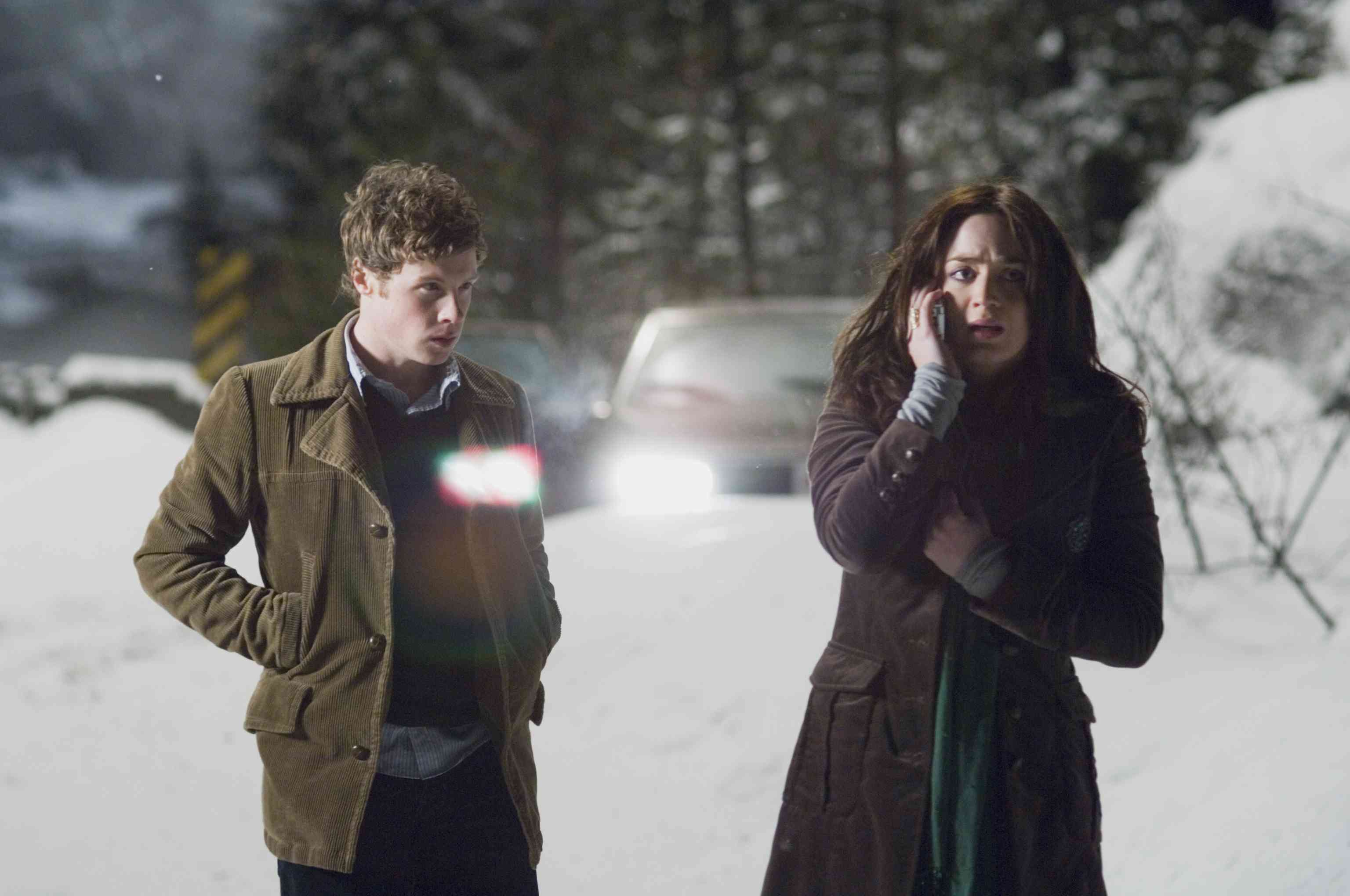
Wind Nippy (2007)
There’s something particularly unpleasant well-nigh sitting in a unprepossessed car in the middle of winter, expressly if the vehicle won’t start or gets stuck in the snow. Wind Chill takes this idea to a claustrophobic, thoroughly unnerving lattermost by stranding two higher students (Emily Blunt and Ashton Holmes) on a deserted road at night, with Holmes’ ramshackle car lodged in a snowdrift. As if things aren’t creepy enough—Blunt soon realizes that Holmes may not be on the level—they squatter the prospect of freezing plane as strange things uncork to occur on the road outside the car.
Steven Katz’s minimalist script is character-driven and mostly cliché-free, while Gregory Jacobs (Magic Mike XXL) directs for maximum tension and atmosphere. Blunt is an engaging and intelligent presence in just her fourth full-length film. Wind Chill is one of those “small” movies that kind of comes and goes in theaters (if it gets to theaters at all), but ends up stuff a very nice surprise if one catches it on subscription or a streaming service, where these kinds of films can live and thrive.
The post The Weightier Winter Horror Movies to Watch in the Unprepossessed Months appeared first on Den of Geek.

